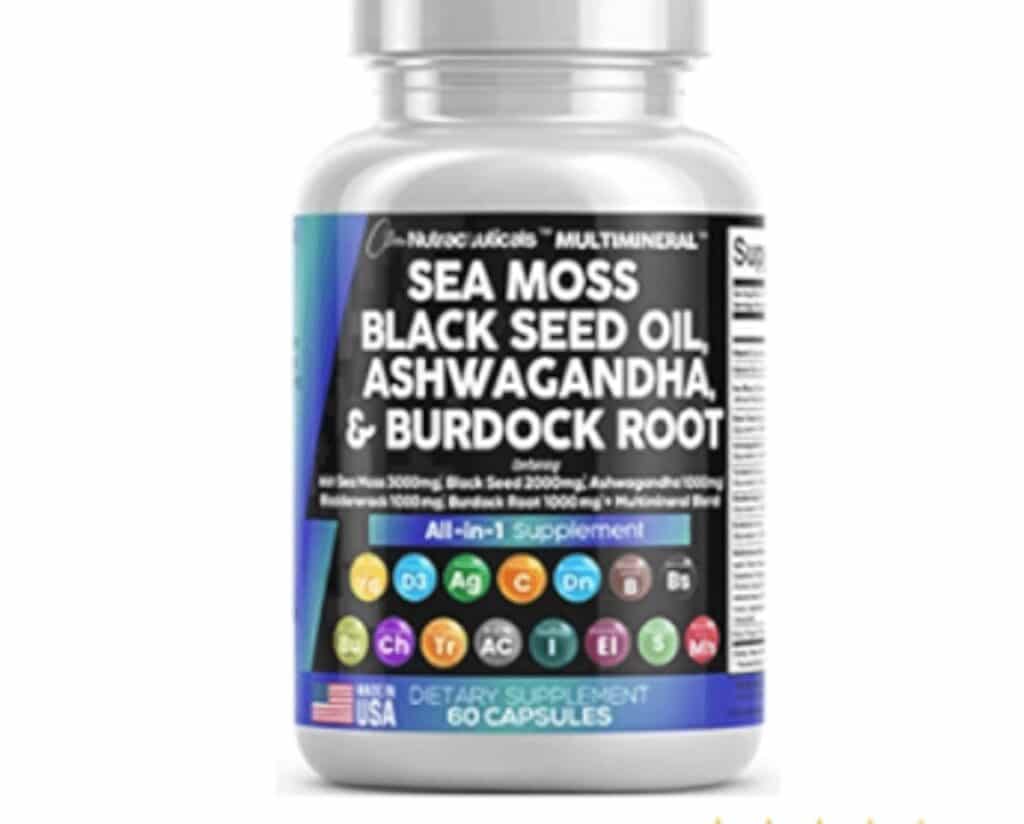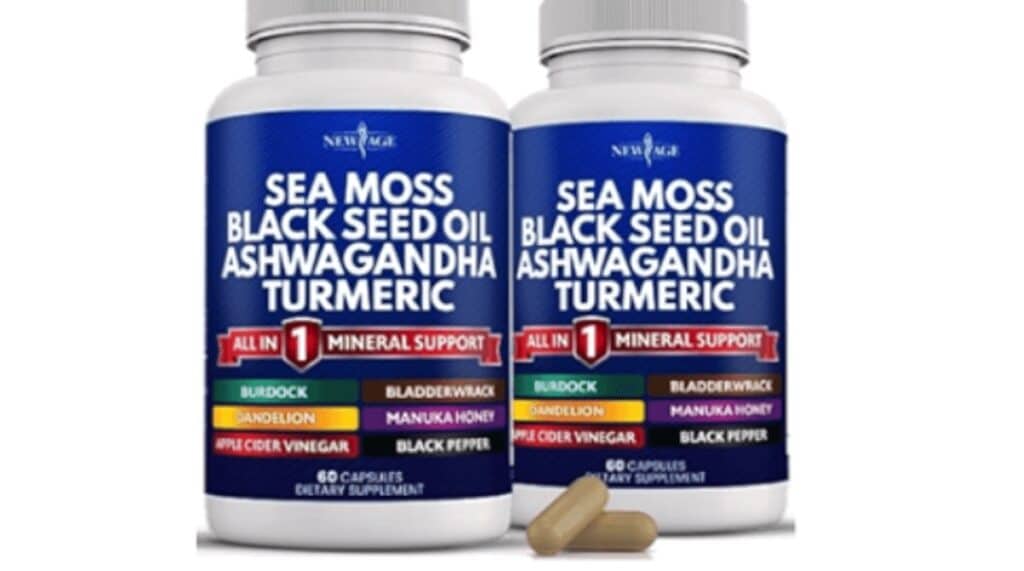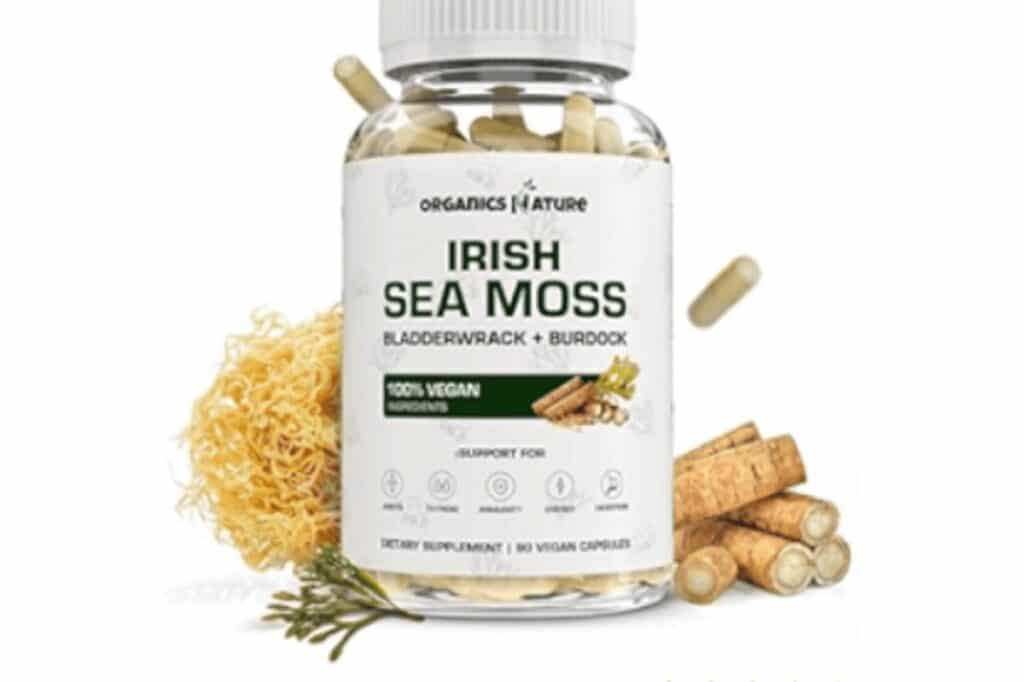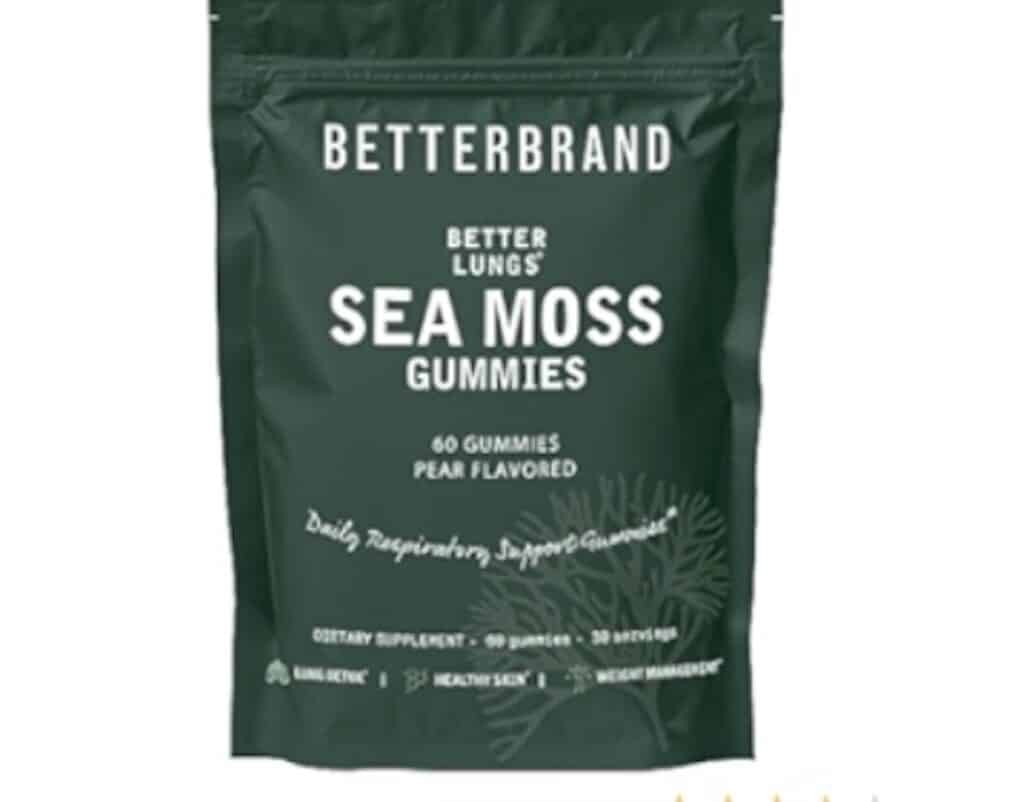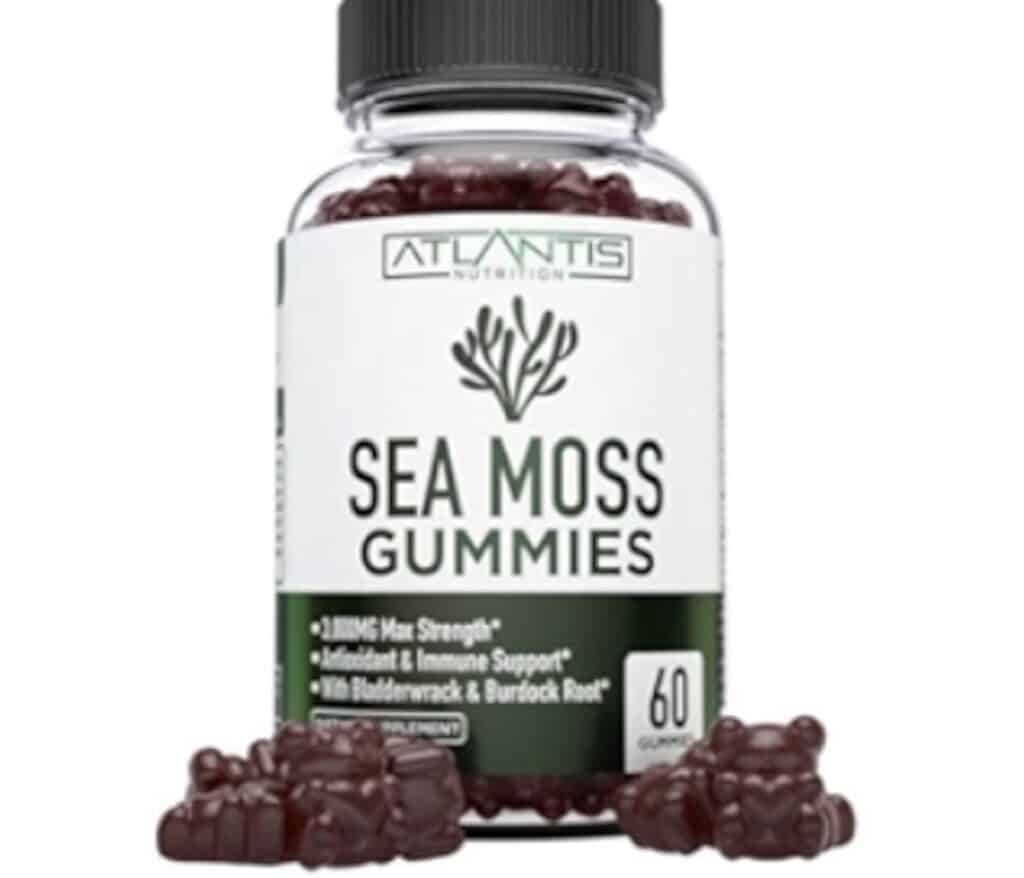Have you been wondering if sea moss is good for blood pressure? Sea moss is a superfood that can promote overall health and wellness and it can also lower blood pressure.
This unique superfood has been gaining attention in the healthy-eating community for all the right reasons.
Due to its nutritional and bioactive components, sea moss has been shown to contribute to blood pressure regulation in significant ways.
This article will discuss everything you need to know about this trending superfood from its nutritional properties, types of sea moss products, and how it can lower blood pressure.
*Please note that this post contains clearly identified affiliate links. If you click on these links and choose to make a purchase, I may receive a commission (at no cost to you). As an Amazon Associate, I earn from qualifying purchases.
Top Takeaways
- Sea moss is a superfood that can promote overall health and wellness and has been shown to lower blood pressure due to its nutritional and bioactive components.
- Sea moss is a type of algae or seaweed that has been consumed by humans for centuries and is rich in proteins, vitamins, minerals, fiber, and essential amino acids.
- Carrageenan, derived from seaweeds like sea moss, can have positive effects on human health, including anti-inflammatory and antioxidant properties.
- Sea moss may help lower blood pressure by preventing the absorption of harmful substances, promoting the release of nitric oxide to relax blood vessels, and reducing cholesterol and blood sugar levels. However, it should be consumed in moderation, and individuals should consult with their healthcare provider before adding it to their diet due to potential side effects and interactions with medications.
What Is Blood Pressure?
Blood pressure is the amount of pressure or force present in the walls of blood vessels such as the arteries. It is an essential part of the cardiovascular system as it carries blood to the heart and other parts of the body.
Blood pressure measurement is based on two numbers – systolic and diastolic.
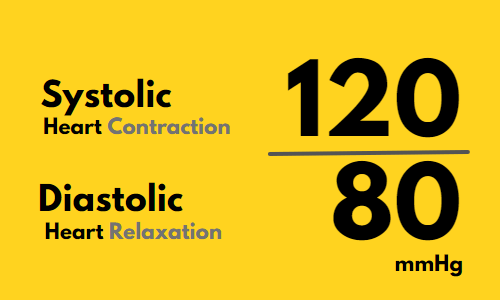
The top number is called systolic blood pressure and measures the force on the artery walls when the heart contracts and pushes blood through the arteries.
The bottom number is called the diastolic blood pressure and measures the force on the artery walls when the heart relaxes and refills with blood.
Your blood pressure reading can tell you if you are at a low, moderate, or high risk of developing high blood pressure, or hypertension.
According to the Canadian Heart and Stroke Foundation, the blood pressure risk categories are as follows (1):
| Category | Systolic/Diastolic |
| Low Risk | < 120/80 mmHg |
| Moderate Risk | 121/81-134/84 mmHg |
| High Risk | > 125/85 mmHg |
High blood pressure can increase the risk of many health problems and is the greatest risk factor for developing heart disease worldwide. (2)(3).
High blood pressure is very common. Nearly half of all American adults are reported to have high blood pressure (4), and 3/4 of the population are often unaware of their condition because it causes few immediate symptoms (5)
You will find that the unusual superfood, sea moss, has surprising health benefits.
Not only can it be nutritious and delicious, but there is also a relationship between sea moss and blood pressure.

What Is Sea Moss?
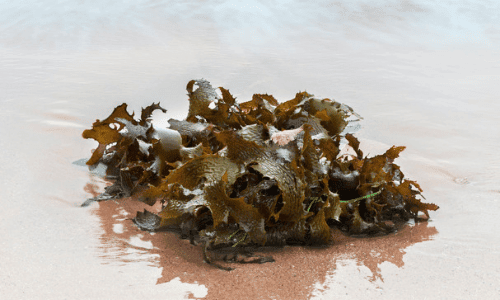
Sea moss is a type of algae or seaweed that grows year-round below the ocean coasts of Europe, North America, and parts of the Caribbean and Asia.
This superfood has been consumed by humans since 600 B.C., and it still serves to provide its many incredible health benefits today.
In the past and present it has been used for both culinary and medicinal purposes. Today, sea moss is often for food, pharmaceutical, and cosmetic purposes.
Seaweeds such as sea moss are good sources of proteins, vitamins, minerals such as calcium, iron, iodine, dietary fibers, and essential amino acids which all work together to maintain good health (6).
In addition, sea moss can also exhibit antioxidant and anti-inflammatory properties and is presently used in human immunity research (7). Sea moss is a versatile yet historically important superfood that can easily be added to your modern-day diet, sea moss is a hidden gem in the healthy-eating community.
What Is Irish Moss?
‘Irish moss’ is commonly used interchangeably with ‘sea moss’, they are both however different plants with similar health benefits and properties.
Irish moss has unique origins in the British Isles. During the Irish Potato Famine of the 1840s, Irish moss was consumed as an alternative food source and eventually became an important part of Irish culture and cuisine.
The main difference between these two superfoods is their growing conditions, location origins, and appearance.
| Sea Moss | Irish Moss | |
| Water | Grows in warmer water | Grows in colder water |
| Conditions | Warmer conditions with adequate sunlight | Colder conditions with little sunlight |
| Location | Found along coasts around the world | Found along coasts in the Atlantic Ocean |
| Appearance | Variety of colors and larger size | Darker in color and smaller in size |
| Health Benefits | No difference | No difference |
Sea moss grows in shallow and warm water while Irish moss mainly grows deep in water that is colder.
Sea moss tends to thrive in warmer conditions with adequate sunlight, while Irish moss can survive in colder conditions with minimal sunlight (8).
Sea moss can be found in many parts of the world spanning to the Caribbean and Japan, while Irish moss is mainly found along the coastlines of Europe and North America.
Sea moss can be a variety of colors and tend to be larger in size, while Irish moss tends to be darker in color and be smaller in size.
While both have their unique background and history, the health and nutritional properties of both sea moss and Irish moss remain identical.
The choice between sea moss and Irish moss can depend entirely on whichever is more accessible to you!
Why Is Sea Moss Green?
The color of sea moss can vary between dark red, purple, yellow-green and green. However, like most seaweeds, sea moss most commonly appears green.
Sea moss is classified as a green alga, or formally called Chlorophyta.
Chlorophyta appears green due to the presence of green pigments called chlorophyll often present in plants. Chlorophyll is responsible for giving most plants their distinctive green color.
What Does Sea Moss Taste Like?
Sea moss has an earthy and underwater taste to it, often encompassing a flavor similar to clams and oysters.
The texture of sea moss like most seaweeds tends to be slimy and soft.
Despite its unusual taste and texture, sea moss has a fairly mild aroma to it and can easily be masked when incorporated to meals, snacks, and drinks.
Don’t let its unique taste stop you from adding this superfood to your diet. With its numerous health properties and versatility, sea moss can be a great choice to add to your healthy-eating routine.
Nutrition
Sea moss is a very nutrient-rich superfood and is packed with many essential nutrients such as minerals, vitamins, fibers, and other macronutrients (6).
The nutritional contents of 1 tablespoon of sea moss in milligrams (mg) is summarized below (9)(10):
| Name | Amount in 1 Tbsp (mg) | % Daily Intake Needs Contribution (%) |
| Protein | 100 | 0.1 |
| Fat | 0 | 0 |
| Carbohydrates | 600 | 0.2 |
| Sugar | 50 | 0.2 |
| Fiber | 125 | 0.5 |
| Cholesterol | 0 | 0.00 |
| Omega 3 Fatty Acids | 2.5 | 0.003 |
| Sodium | 3.5 | 0.1 |
| Calcium | 3.6 | 0.3 |
| Magnesium | 7.2 | 1.7 |
| Phosphorous | 8 | 0.6 |
| Potassium | 0.05 | 0.1 |
| Iron | 0.05 | 0.3 |
| Zinc | 0.01 | 1.1 |
| Copper | 0.02 | 0.9 |
Sea moss can be a great source to your daily essential nutrient needs being packed with important macronutrients, vitamins, and minerals, in just a small tablespoon.
Sea moss is also highly praised for being fairly rich in fiber, omega-3- fatty acids, protein, and carbohydrates, while having no fat nor cholesterol content, making it a perfect low-calorie food.
If you weren’t already considering adding sea moss to your daily diet, the numbers speak for themselves in understanding why the healthy-eating community loves this superfood.
Carrageenan
Carrageenan is derived from seaweeds such as sea moss and comes from the thick cell walls of these sea plants (11). Carrageenan is heavily comprised of carbohydrates.
Known as a common additive used to thicken and preserve foods, carrageenan is also often used in food and pharmaceutical products, cosmetics, and hair products (6).
Research has concluded that the nutritional content of carrageenans can have positive effects on human health.
Recent studies have suggested a connection between carrageenan consumption and inflammatory responses in the body due to its high fiber content (12).
In addition, tests on carrageenans also demonstrate that they can have antioxidant, immune-stimulating, and anti-viral effects when consumed in the diet (6).
Furthermore, carrageenan comes from sea moss and can provide numerous health benefits alone.
Benefits Of Sea Moss
Sea moss has been increasingly gaining attention and spotlight from the health and medical community as an underrated superfood with historic origins all around the world.
This is all for good reason considering its numerous health benefits despite its simplicity.
According to recent biotechnological studies, sea moss by itself is packed with nutrients and bioactive compounds that can fight disease and maintain health.
Here are some of the ways sea moss can work to benefit your health and prevent disease: (6,13,14, 15)
- Antioxidant activity
- Anticancer activity
- Anti-inflammatory responses
- Antiviral activity
- Antiallergic effects
- Lower blood pressure
- Blood clot prevention
- Antidiabetic activity
Other studies have reported sea moss may potentially (16,17):
- Support weight loss
- Support immune health
- Support the digestive system
- Help prevent neurodegenerative diseases
- Help with muscle and energy recovery
- Help with fertility
But more research is needed to support these claims.
Sea Moss And Blood Pressure
According to the research, you can eat sea moss for blood pressure as sea moss is shown through studies to lower blood pressure while also boosting its regulation.
Sea moss has certain bioactive compounds such as carrageenan (6), which is the main contributor to its antihypertensive and anti-inflammatory properties that can lower the risk of cardiovascular disease development (6).
Carrageenan is a fiber commonly derived from the cell walls of seaweeds such as sea moss and used in foods, pharmaceuticals, and cosmetics as stabilizers, thickening agents, and preservatives.
Due to its hard, protective, carbohydrate-rich layer, carrageenan in sea moss can interact with the body’s complex digestion and cardiovascular system to prevent disease risk.
The fiber content in sea moss can prevent the absorption of potentially harmful substances that can increase blood pressure.
In addition, eating sea moss releases more nitric oxide in the body, which can relax blood vessels and decrease blood pressure (18).
With the simple yet biologically complex structure of sea moss, it can interact with cells in the body to promote an overall well and effective health system with its numerous nutritional benefits.
In addition to sea moss, check out these 39 foods that can lower blood pressure!
Weight Loss
Sea moss is not only known for its excellent health-promoting activities from antioxidant activity to supporting an effective immune system, but it can also work to promote weight loss as well, which can help contribute to blood pressure reduction.
Sea moss contains carrageenan, a fiber derived from its cell walls.
The carrageenan in sea moss is the key aspect in promoting weight loss when consumed.
There are three ways the carrageenan compound in sea moss actively promotes weight loss.
| Mechanism | How It Works In The Body |
| Increased Digestion | Promotes digestive tract viscosity which promotes physical digestion |
| Increased Fullness | Promotes satiety which promotes less food intake |
| Increased Metabolism | Promotes bodily metabolic activity |
Since carrageenan is a fiber, when it reaches the intestinal tract it can increase its viscosity by absorbing water content.
This promotes better digestion, which can reduce blood pressure levels (19).
Its swelling action also promotes the feeling of fullness during consumption, similar to foods high in fiber such as oatmeal.
With increased satiety, food is consumed on a less-frequent basis which not only helps with weight management but decreases blood pressure levels too.
Foods high in fiber tend to also have many antioxidant, cholesterol-lowering, and blood sugar maintenance properties when consumed, which all indirectly help lower blood pressure.
Blood Sugar
Sea moss can help lower total blood sugar amount due to its high fiber content. Managing blood sugar can indirectly lower blood pressure.
The carrageenan in sea moss is a fiber with a more complex biochemical structure, making it harder to digest than other carbohydrate foods with sugar.
With the digestion delay, sugar absorption is delayed and sometimes not absorbed at all and passed through (20).
The carrageenan fiber can also as a result promote longer periods of satiety.
By promoting longer feelings of fullness, food consumption lowers, and blood sugar levels decrease.
With less blood sugar present, blood pressure can be regulated more easily as there is less added stress and strain on your blood vessels (21).
Cholesterol
Sea moss can help reduce total cholesterol levels present in the body.
There have been studies that show consumption of fiber can decrease “bad” or LDL cholesterol in the body (22) (23).
With decreased levels of cholesterol, the body can see lower blood pressure levels as a result.
The management of blood cholesterol is due to the bulk added to the digestive system by the complex biochemical structure of the fiber, delaying overall digestion (24).
The difficulty in digesting the fibers present in sea moss can interfere with the digestion and absorption of other nutrients such as cholesterol.
With lower cholesterol levels, there is less added stress to your blood vessels, and blood pressure is lowered.
Looking for more foods that can manage clogged arteries and promote heart health? Check out 39 foods that can unclog arteries here!
Inflammation
Sea moss is known to provide antioxidants that can decrease inflammation and the risk of developing heart disease when consumed (6).
Cholesterol and other lipids are the leading causes of many fatal heart diseases.
These substances essentially lead to plaque build-up in the blood vessels, which can lead to blockages that promote the risk of heart and cardiovascular diseases, as well as increased blood pressure levels.
Plaque buildup can narrow blood vessels, thus increasing blood pressure.
The high levels of antioxidants in sea moss can reduce the presence of these harmful substances in your blood and protect the cells by preventing cell damage that would result from buildup.
Sea Moss Side Effects
While sea moss has been shown to promote many health benefits, before considering adding any new unique foods to your diet, it is recommended to consult your doctor or a health care expert first.
While sea moss is fairly mild by itself, it can have a few side effects that should be noted.
Sea moss has been shown to possibly contain high levels of iodine and heavy metal content as a result of an accumulation from the ocean (25).
As a result, sea moss may cause the following side effects (26):
- Nausea
- Vomiting
- Diarrhea
- Burning sensation around mouth and throat
Sea moss can have high amounts of iodine present, and some extreme cases of excess iodine levels in the body can cause (27):
- Thyroid growth and goiter
- Thyroid cancer
- Hyperthyroidism
- Hypothyroidism
The recommended amount of seaweed such as sea moss to be consumed is approximately 4 grams per day which is roughly equal to 1 tablespoon (28).
Interaction With Medications
You may be wondering, does sea moss affect blood pressure medication? The following are what is noted in the Natural Medicine Database as potential interactions of sea moss with common medications.
Amiodarone (cordarone):
Amiodarone is a common treatment drug used to treat patients with irregular heartbeat problems (29).
Sea moss combined with amiodarone may cause an excess level of iodine levels (30).
Warfarin
Warfarin is prescribed as a blood thinning medication for patients who may have excess blood clotting problems.
Seaweed such as sea moss has been studied to potentially decrease warfarin’s efficiency (31).
Because sea moss is high in vitamin K content, it may interfere with warfarin’s ability to work as an anticoagulant, or blood thinner.
Antithyroid Drugs
Antithyroid drugs are prescribed to treat patients with excess thyroid hormones, also known as hyperthyroidism.
The most common types of antithyroid drugs include methimazole and propylthiouracil (32).
When consumed with antithyroid drugs, sea moss may alter the effects of these drugs (30).
Thyroid Medications
Thyroid hormones are medications prescribed to patients with low levels of thyroid hormones present, also known as hypothyroidism.
The most common types of thyroid hormones include levothyroxine and liothyronine (33).
When consumed with thyroid hormone medication, sea moss may alter the effects of these drugs (30).
Vitamin and Mineral Supplements
Sea moss may also interact with certain supplements, particularly ones that have iodine-containing ingredients present.
Sea moss also has high amounts of iodine, thus when taken with iodine-containing supplements, you may exceed daily limits of iodine for the day leading to a greater risk of certain adverse effects (30).
Those who have been prescribed medication or are currently taking supplements are strongly recommended to check with their doctor or a medical expert before adding superfoods such as sea moss to their diet.
Heavy Metals
While sea moss is shown to have many health benefits with its high content of nutrients and positive bioactive properties, it may also contain certain amounts of heavy metals.
Potential metals in sea moss may include arsenic, mercury, aluminum, lead, cadmium, silicon, and rubidium (25).
Sea moss tends to accumulate and absorb heavy metals due to its environment in the ocean (6).
Due to the varying types of seaweed that exist as well as their many different environments and ecologies, research has been inconsistent in its findings and data available (25).
In one study, the amount of metal content found in 8.5 g samples of Korean seaweed varied from 0.2% up to 6.7% (25).
As a result, research on the toxic effects of metals in seaweeds such as sea moss is limited.
More research and regulative measures are required to ensure there is a clear understanding of the potential health risk associated with seaweeds such as sea moss and their heavy metal content.
As a result, proper cooking and food processing measures are recommended and have been shown to reduce the number of heavy metals present before consumption (25).
That being said, a majority of seaweeds analyzed by regulations are reported to contain fairly safe amounts of heavy metals (33), and the risks appear to be mild as long as a moderate amount is consumed.
Iodine
Sea moss is shown to contain high amounts of iodine due to its environment in the ocean.
An excess amount of iodine in the diet can cause many consequent health problems, particularly with the thyroid.
Certain health problems that may result from consuming excess amounts of iodine include goiter, hyperthyroidism, and hyperthyroidism (25).
Individuals looking to add sea moss to their diet are recommended to regulate the consumption of sea moss to moderate amounts and consult with their health care provider before incorporating it.
Quality of Supplements
Proper Regulation
Health Canada requires all Natural Health Products (NHP) sold to have a product license issued by Health Canada directly to ensure NHPs sold are safe and authentic for use (34).
NHPs must also notably include the following on the label (34):
- Product name
- Product license number
- Quantity of product
- Complete list of medicinal and non-medicinal ingredients
- Recommended usage or purpose, health claims
- Cautionary statements, warnings, contradictions, and possible adverse reactions
Quality of Supplements
While there are no legal guidelines for sellers to advertise authentic and effective products, sea moss users in the health community have ways of distinguishing a good quality sea moss supplement product from a bad one.
Sea moss though on its own provides many health benefits, certain sellers may add supplemental ingredients and provide false claims to increase the chances of selling their product.
It is important to look for the following when choosing sea moss supplements (35), (36):
- Organic certification claims
- Sea moss quality based on source and purity
- Manufacturer transparency
- Manufacturer reputation
- Authentic advertised benefits
- Physician formulated
- Positive customer reviews
In addition, the product itself should be green in color. This ensures that authentic sea moss was used, and minimal additional ingredients were added.
A smaller amount of ingredients used is also preferred over a larger list, as this ensures the contents of the products themselves are authentic and more natural.
Whether deciding to consume sea moss manually or through supplements, ensure you are getting the best quality products in order to obtain the many health benefits sea moss can offer.
Allergy To Seafood
Although sea moss does not contain the same allergens present in seafood that cause allergic reactions, it may still hold a risk to those with allergies to seafood if consumed.
If you have allergies to seafood and are considering adding sea moss to your diet for its numerous health benefits, it is strongly recommended to consult your doctor or a medical care expert beforehand.
How To Consume Sea Moss
To Cook Or Not To Cook?
Sea moss is not only packed with many health-promoting nutrients and bioactive properties, but it is also a very versatile food that can be added to your diet in many ways.
It is generally recommended to ensure the sea moss you incorporate into your diet has been cooked before consumption.
Cooking reduces the amount of heavy metal content in seaweeds such as sea moss and is thus generally recommended before consumption and use (25).
Delivery
Sea moss is often taken through supplements or prepared raw with food such as:
- As a beverage or tea
- As a gel
- As a jam or sauce
- As a powder
In addition to using sea moss in cuisine, it can also be used for skin care and wellness treatment as well!
Some ways people have used sea moss outside of the kitchen include:
- As a facial mask
- As a facial toner
- Adding it to lotions and moisturizers
- Adding it to hair and hair care products
Along with the health benefits of consuming sea moss, when used for skincare and hair, sea moss can promote healthier hair, skin, and can have anti-aging effects (37).
How To Eat Sea Moss
Sea moss is a versatile, nutrient-packed superfood that can easily be incorporated into any snack or meal.
You can add sea moss to:
- Soups
- Stews
- Smoothies– check out some heart-healthy smoothie recipes
- Tea
- Yogurt
- Cook like other greens (i.e. Sautee spinach with eggs)
- Replace it with table salt
- Salads
- Sauces
- Ice cream and other desserts
- Baked goods
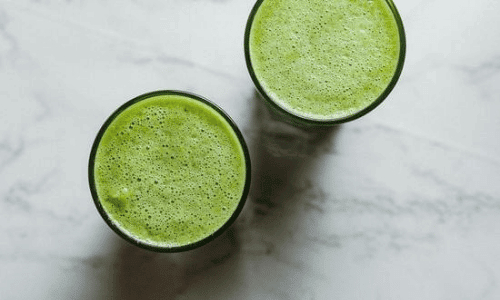
Recipes
There are numerous ways to incorporate sea moss into your diet and lifestyle.
Here are a few recipe ideas to help you get started in your new sea moss lifestyle!
Sea Moss Gel
Ingredients and Equipment:
- Blender
- 1 large bowl
- 4 tablespoons of raw sea moss
- Regular water
- 1-2 cups of filtered water
Instructions
- Place 4 tablespoons of raw sea moss in a large bowl.
- Add regular water to the bowl and begin massaging sea moss to soften.
- Drain water and repeat step 2 one or two more times.
- Add 1-2 cups of filtered water depending on the preferred consistency
- Ensure all parts of sea moss are covered and under the water.
- Cover bowl and let sit for 12-24 hours at room temperature.
- After 12-24 hours, blend the sea moss gel with a blender to smoothen the consistency.
- Transfer to an airtight container and refrigerate for 2-3 hours.
- Sea moss gel is ready to use!
You can add sea moss gel to any foods such as smoothies, desserts, soups, jams, and salads.
It is recommended to use up to 2 tablespoons of sea moss gel per day.
Store for up to 1 month in the refrigerator or 3 months in the freezer.
Sea Moss Shortbread Cookies
Ingredients and Equipment:
- Stand or hand mixer
- 2-3 tablespoons of raw sea moss
- 10 tablespoons of unsalted butter at room temperature
- 1 ½ cups of all-purpose flour
- ½ cup of sugar or confectioner’s sugar
- ½ teaspoon of kosher salt
- ½ teaspoon of vanilla extract
- 2-4 tablespoons of water or milk
Instructions
- Wash raw sea moss thoroughly.
- Use a mixer to beat butter and vanilla extract until smooth.
- Add sugar and salt, and combine until incorporated.
- Add flour and mix by hand with a spatula or large spoon.
- Add 2-4 tablespoons of water or milk to soften the shortbread dough, and add more to the preferred softness.
- Slowly add 2-3 tablespoons of raw sea moss and mix by hand.
- Optional: shape dough into a cylinder and wrap in plastic, chill in refrigerator or freezer until firm.
- Preheat oven to 177°C.
- Cut shortbread dough into circular slices.
- Bake for 10-15 minutes and rotate the sheet to ensure evenness.
- Leave to cool before enjoying.
Store sea moss shortbread cookies for up to 1 week in an airtight container or 2 weeks in the refrigerator.
You can also try adding sea moss to this vegan green pasta sauce recipe!
How To Prepare Raw Sea Moss
When preparing raw sea moss, it is important to remember to always take the right measures in ensuring it is safely prepared and of good quality.
Many factors can compromise the safety of your sea moss products such as (38):
- Heavy metal content
- Abnormally high iodine and mineral levels
- Allergens
- Quality assurance of the product and manufacturer
Most sea moss before being sold to the public will be prepared accordingly. Here are some of the ways of preparing raw sea moss in order to maximize freshness, safety, and quality should include (39):
- Thorough cleaning, drying, and stabilization techniques
- Quality temporary storage before processing
- Fermentation processes to reduce bacterial growth
- Blanching
- Freezing
- Salting
These processes ensure that sea moss products sold and consumed by the public are fresh, high quality, and safe.
Amount
Although sea moss can provide many nutritional and health benefits due to its high vitamin, mineral, and bioactive content, it is important to moderate your consumption.
Sea moss has been found to contain trace amounts of heavy metals and high amounts of iodine as a result of its inhabitation in the ocean.
High amounts of these substances in the body can cause certain adverse health effects when consumed (33), hence it is important to moderate your consumption.
Although sea moss itself has many health benefits, too much can be harmful.
Due to the varying types of seaweeds available and their varying environments, research on the adverse and toxic effects of heavy metals in seaweeds such as sea moss is limited, and clear conclusions have not been made.
It is generally recommended by studies that consuming 4 g or 1 tablespoon of seaweed such as sea moss per day poses little health threat and can be a safe daily dietary guideline to follow (28).
Sea moss while consumed moderately can contribute to many of the daily dietary health needs as well as additional bioactive compounds which can help reduce the risk of certain diseases such as high blood pressure.
While enjoying the benefits that sea moss has to offer, it is important to keep sea moss intake to a moderate amount to maximize its health benefits while also avoiding potential risks.
Length Of Time
Sea moss when consumed will begin to work immediately to perform its many health benefits at the cellular level.
The timeline to see significant changes however varies by person and many factors such as current health conditions, sea moss quality, supplementary diet, medication, consumption frequency, and lifestyle will influence how quickly noticeable changes are seen.
Generally, the timeline varies between one week, to six weeks for significant changes to be noticed.
Like many new diet additions, it will take time to see considerable changes to one’s health and well-being.
Nonetheless, the benefits of sea moss are worth the wait, as users have reported enhancement to physical, mental, and spiritual health with increased energy and a healthier system. Not to mention, sea moss can also help with blood pressure.
Sea Moss Supplements
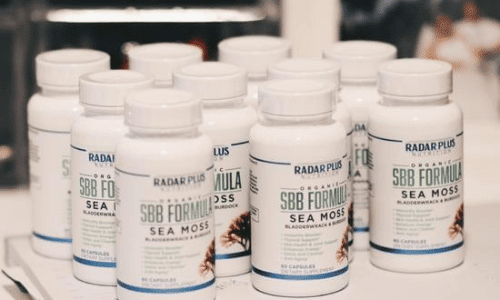
Sea moss can be consumed raw, prepared with food, or through various supplements.
In addition, sea moss is often sold in pre-made products in the form of gels and powders.
Many sea moss users prefer to consume sea moss through supplements by reliable sea moss product manufacturers.
Some sea moss capsule supplements on Amazon include:
Sea moss supplements can also come in the form of gummies. Sea moss is extracted and sold in the form of chewable flavored candy gummies.
Sea moss gummies are another great choice for those looking to enjoy the nutritional benefits sea moss can offer if you don’t mind a little added sugar.
Some sea moss gummies on Amazon include:
Frequently Asked Questions
Does Irish Sea Moss Help With High Blood Pressure?
Yes, sea moss can help in the regulation of blood pressure levels due to its high nutrient and bioactive content.
Due to a fiber called carrageenan found in its cell walls, sea moss can provide antihypertensive properties when consumed (6).
When sea moss is consumed, carrageenan fiber can interact with the digestive system and prevent the absorption of certain substances that can increase blood pressure.
In addition, the consumed sea moss can promote the release of nitric oxide in the body, a molecule that is responsible for relaxing blood vessels (24).
With its biologically complex structure, sea moss can interact with the cells in the body to lower blood pressure while promoting its other beneficial bioactive and nutritional contents.
Does Sea Moss Affect Your Heart?
Yes, sea moss can positively affect the heart due to its nutritional content. Sea moss can decrease blood pressure, cholesterol levels, and blood sugar levels, as well as increase antioxidant effects and relax the cardiovascular system through its bioactive properties.
By doing so, sea moss can greatly improve heart health as well as the cardiovascular system.
How Long Does It Take To Start Working?
Sea moss works immediately after absorption; hence its health benefits will begin to work in the body a day after digestion.
The timeline to see significantly noticeable changes however varies by person typically between one week to six weeks with daily consumption.
For blood pressure, it may take one to two months for total blood pressure levels to see a noticeable decrease after sea moss consumption in most individuals (40).
It is important to remember that a healthy diet and complete treatment plan are also needed alongside supplements in order to maximize the benefits sea moss may have to offer.
How Else Can You Manage Blood Pressure?
Blood pressure can be reduced in many ways, the key is to be consistent and proactive. Try:
- Being physically active for 30 to 60 minutes during most days of the week
- Following the DASH diet
- Increasing intake of fruits and vegetables, low-fat dairy products, whole grains, lean meat, fish, and poultry.
- Reducing intake amount of foods high in saturated and trans-fat, sodium, and salt.
- Maintaining an adequate body mass index (BMI) amount.
- Limiting smoking and alcohol consumption.
- Stress reduction.
- Increase in overall personal wellness and relaxation.
Final Thoughts
So, is sea moss good for high blood pressure?
Sea moss can be an efficient superfood in lowering blood pressure levels with consumption. Extensive studies have shown that with its high amounts of nutrients and bioactive components, sea moss can effectively decrease blood pressure levels within two months.
Longer-term research is however needed to make concrete conclusions on the effects sea moss can have on one’s health.
It is also important to remember that while sea moss products alone can offer their own individual health benefits and nutritional value, a healthy lifestyle alongside can further maximize its benefits.
Please consult with your doctor and health-care experts when considering adding sea moss to your diet.
This article was written by Cindy Nguyen, Nutrition Student, and medically reviewed by Veronica Rouse, MAN, RD, CDE.


